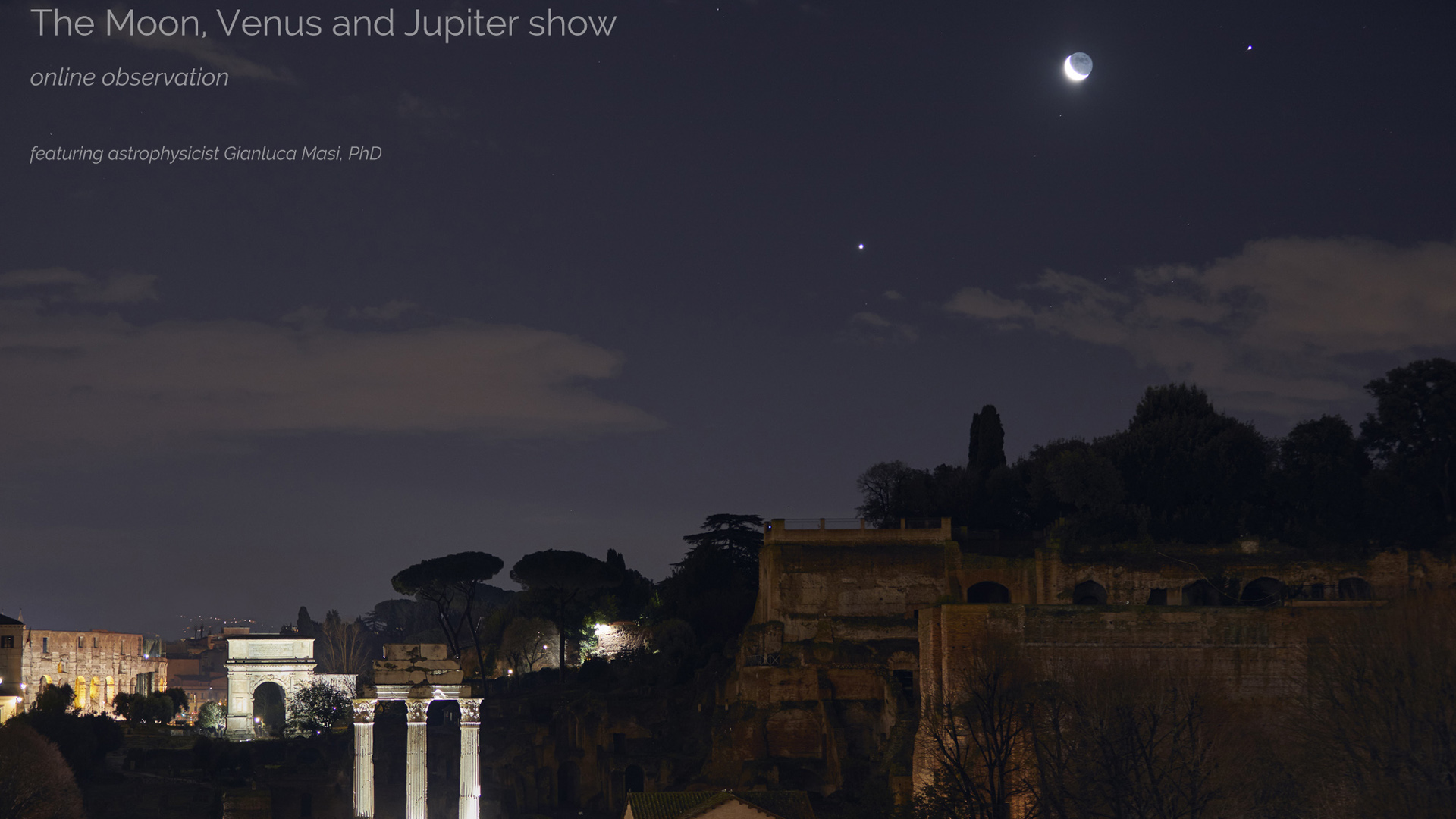Watch the moon meet Venus and Jupiter in the sky tonight with free livestream
Three brightest objects in the night sky will get together early on Feb. 22 and you can watch it live via the Virtual Telescope Project.

Editor's note for Feb. 23: The Virtual Telescope Project livestream of Jupiter and Venus for Feb. 22 was canceled, but both planets can still be seen clearly in the night sky with the naked eye. Learn how to see the planets this week in our viewing guide.
The three brightest objects in the night sky meet up early on Wednesday (Feb. 22) when the moon makes a close approach to both Venus and Jupiter in the sky. The moon will visit Venus, the second planet from the sun, first, and then will move close to the solar system's largest planet, the gas giant Jupiter, shortly after this.
For skywatchers not able to get out to witness this busy day for the two-day-old moon for themselves, the Virtual Telescope Project will live stream the event on its website and YouTube channel, allowing you to watch it from your home for free. The live feed is scheduled for Wednesday (Feb. 22) starting at 2:00 p.m. EST (1900 GMT).
"On Feb. 22, 2023, soon after sunset, the moon, Venus, and Jupiter will be in the same spot of the sky, within eight degrees, offering an outstanding show," Gianluca Masi, who heads The Virtual Telescope Project, wrote in a statement. "The Virtual Telescope Project is ready to share the vision with you, with those cosmic gems hanging above the legendary skyline of Rome, the Eternal City."
Related: What is the moon phase today? Lunar phases 2023

Looking for a telescope to see the Galilean moons of Jupiter? We recommend the Celestron Astro Fi 102 as the top pick in our best beginner's telescope guide.
For skywatchers who want to see these two encounters for themselves, the moon's close approach to Venus will be visible from New York City when it rises at around 7:52 a.m. EST (1252 GMT). The moon and Venus will make a close approach passing to within one degree and 50 minutes of each other, according to In the Sky. Also from New York City, Jupiter will rise at around 8:12 a.m. EST (1312 GMT). During this close encounter, the moon and the gas giant will be separated by just one degree and 0.3 minutes.
As it makes closest approaches to Venus and then Jupiter, the moon will share the same right ascension with both planets, an arrangement that astronomers call a conjunction.
Breaking space news, the latest updates on rocket launches, skywatching events and more!
The conjunction between the moon and Venus will disappear at around 7:59 p.m. EST (0059 GMT). The conjunction with Jupiter will be visible until around 8:38 p.m. EST (0138 GMT).
During its meetups with the second planet from the sun and the solar system's largest planet, the moon will shine with a magnitude of -9.8, Venus will have a magnitude of -4.0, and Jupiter -2.1 (the minus prefix indicates bright objects). All the objects will be in the constellation of Pisces, but the moon will have moved to Cetus when it gets closest to Jupiter.
Even at their closest approaches, the three bright celestial objects will be too widely separated to fit into the field of view of a telescope. The moon's close approach to Venus and then to Jupiter should be visible with a pair of binoculars, however.
If you're hoping to catch a glimpse of these conjunctions or any of these celestial objects individually, our guides for the best telescopes and best binoculars are a great place to start.
If you're looking to snap photos of the night sky, check out our guide on how to photograph the moon, as well as our best cameras for astrophotography and best lenses for astrophotography.
Editor's Note: If you snap the conjunction of the moon and Venus or the moon and Jupiter and would like to share it with Space.com's readers, send your photo(s), comments, and your name and location to spacephotos@space.com.
Follow us @Spacedotcom, or on Facebook and Instagram.

Robert Lea is a science journalist in the U.K. whose articles have been published in Physics World, New Scientist, Astronomy Magazine, All About Space, Newsweek and ZME Science. He also writes about science communication for Elsevier and the European Journal of Physics. Rob holds a bachelor of science degree in physics and astronomy from the U.K.’s Open University. Follow him on Twitter @sciencef1rst.
